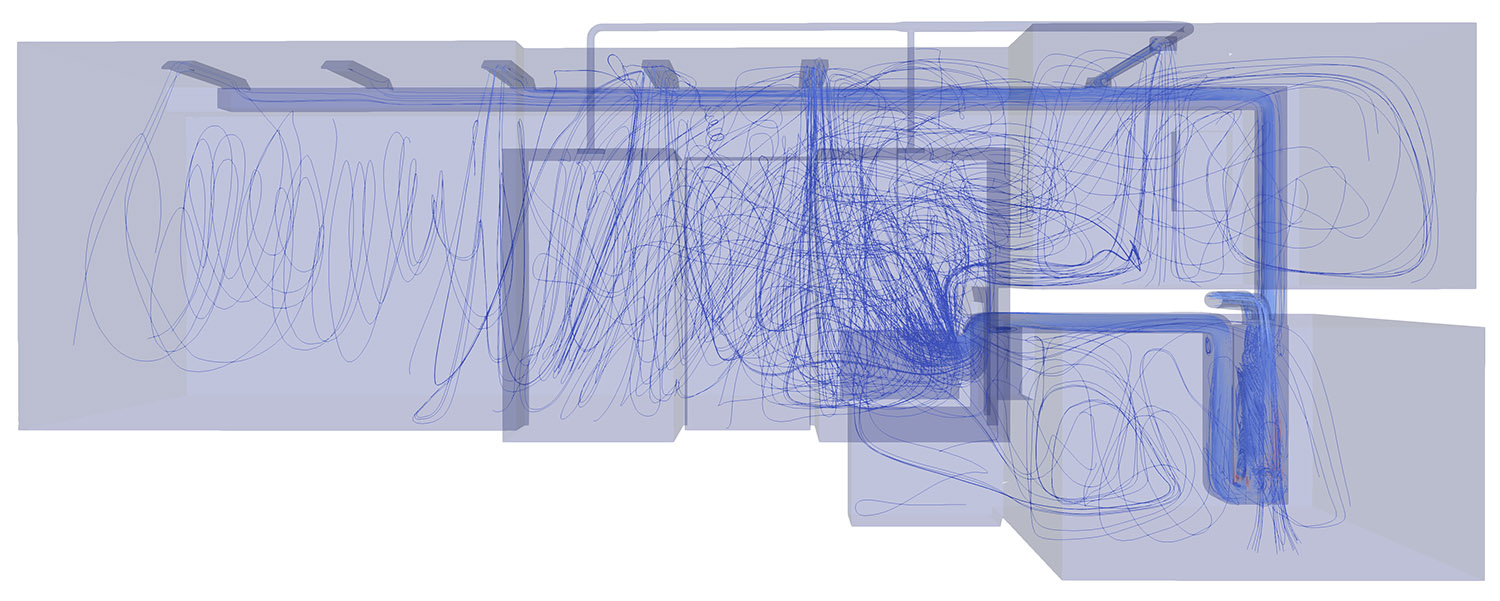Nick Raffel
plenum
February 29 - August 20
plenum
February 29 - August 20

“Some days Nature makes perfect. Some days are good days… If Nature can make a good day once in a while we’ll manufacture weather and make “Every day a good day.”
-Willis Carrier, The Story of Manufactured Weather, 1919
Engineered plans for HVAC (Heating, Ventilation, and Air Conditioning) are created in CAD (Computer Aided Design) programs whose logic relies on ideal conditions of pure air circulating through a vacuum. In an attempt to realize these conditions, buildings are sealed from their surrounding environment. Impermeable membranes wrap exterior walls and windows are sealed shut. Such plans do not account for the matter that inevitably fills the space: off-gassing from construction materials, carbon monoxide, particulates, mold, human dander and debris circulate indefinitely through nearly airtight interiors.
Closed loops of thought similarly compound their own toxicity. An idea re-inscribed again and again without exposure becomes pernicious.
In HVAC, a plenum is an optional section within the network where fresh air mixes with recirculated air. The word plenum comes from the phrase, nature abhors a vacuum. It means fullness.
In this exhibition, two groups of sculptures are installed across the two floors of the gallery. The installation of the work responds to a CAD model of the space in which a CFD simulation (computational fluid dynamics) visualizes how air circulates through its own sealed interior.
The sculptures made of MDF share proportions with sealed buildings (eg, warehouses, fulfillment centers, condominiums, office buildings) and sections of the HVAC ducts they rely on. The sculptures rearrange the ventilation of their referents in order to generate passive airflow. Vents which usually exhaust, instead draw air through the sculptures.
The sculptures made of stainless steel appropriate pipes and fittings meant for the processing of air, gas, and fluids. In the industrial movement of matter, resistance is the enemy of efficiency and straight lines predominate. The sculptures move away from this unidirectionality towards the irregular paths of more responsive flow systems – be they irrigation, traffic patterns, or nerve networks. Outside industrial spaces, these systems engage with and adapt to changing conditions.